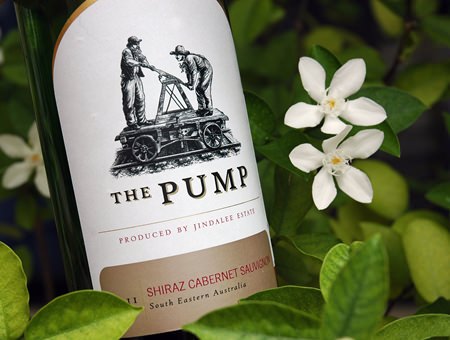Do you remember that song? If you do you, must be over A Certain Age. It was made famous back in 1961 by Chubby Checker as I recall. The twist may have long since disappeared but some things just don’t go away. One of them is the argument about whether wine bottles should have traditional corks, artificial corks or no corks at all. The alternative to cork – the twistable screw cap – is a metal thing that fits on the neck of the bottle and usually has a metal skirt to resemble the traditional foil. Inside it, there’s a layer of plastic, rubber, or other material which creates a seal with the top of the bottle. It’s better than cork at keeping the air out.
As to those very few wines that need twenty or thirty years of ageing to be at their best, well, that’s a different matter. Cork, with a centuries-old tradition is usually considered ideal for that purpose. But is it? For generations, it’s been assumed that that the slow intake of oxygen through a cork plays a vital role in ageing a wine. But more recently, some wine experts have argued that if the cork is perfect, the incoming oxygen is virtually zero, and that any oxygen is detrimental to the wine. No one really seems to know for sure.

Cork can be unreliable. It’s been estimated that 2% of all bottles of wine are damaged by cork taint (“corked”) and an even greater percentage through oxidation. Wine becomes “corked” when the cork is infected with a fungus that produces a chemical known by the poetic name of 2, 4, 6-trichloroanisole. This makes the wine smell dank, like a wet dog. And if you’re not quite sure what a wet dog smells like, you’re welcome to borrow one of mine after it’s been out in the rain. There will, of course, be a modest fee.
Faulty bottles are more likely to be oxidized rather than corked. Oxidization turns white wines yellowish and red wines take on an orange tinge and smell of jammy cooked fruit. It usually happens because of bad storage or transit. When cases of wine are left lying around in a hot loading bay, or spend hours sweltering in the back of a truck, the wine expands in the bottles and sometimes pushes the corks out a little way. When the wine finally cools down, air is sucked into the bottle and oxidization happens.
Screw caps have a much lower failure rate, because they prevent oxidation and give the wine a better chance of reaching you in good condition. They’re easier to open too. If I were a wine waiter, I’d much prefer to twist screw-caps all evening rather than go through the tortuous Ballet of the Corkscrew. If you want to impress your friends, the technical name of the screw-cap is a Stelvin Closure, named after the most well-known brand which was developed by Rio Tinto Alcan in the late 1960s and 1970s.
“The Pump” Chardonnay 2011 (white), Australia (Bt. 355 @ Friendship)
This comes from a winery called Jindalee, which sounds more like a character from The Mikado than a winery. But apparently it’s an Aboriginal word that means “bare hills”. Founded by the brothers Vince and David Littore, Jindalee Estate (“We’re wild about our wine”) is one of the largest privately-owned vineyards in Southeastern Australia with over 1,400 acres of land. They produce nearly two million bottles of wine a year including some high quality table wines.
This wine actually smells like a Chardonnay which is a good start, with classy aromas of warm, sweet fruit, notably peaches and melons. When the bottle has been open for a while, you might pick up a faint whiff of lime too. There’s plenty of fruit on the palate and just a tiny dash of acidity to firm it up. The wine is clean and dry, a hint of fruity sweetness and a long, dry and pleasing finish. I rather enjoyed this and I have to admit it rather exceeded my expectations. Although it’s quite crisp and lively, it’s very much a commercial Aussie easy-to-drink style and it could well appeal to people who don’t normally drink wine. It’s fine on its own but could make a good partner for light fish or chicken dishes.
“The wine,” says the back label “is made with a sense of adventure and irreverence.” What this actually means is anyone’s guess. Honestly, I haven’t a clue.
“The Pump” Shiraz-Cabernet Sauvignon (red), Australia (Bt. 355 @ Friendship)
The aroma of this dark red wine is dominated by the Shiraz in the blend: that intense seductive black olive, peppery, plum-jam aroma that you’ll recognise if you’ve ever stuck your snout in a glass of Shiraz. “And who hasn’t?” I hear you ask, for Shiraz must be one of the most popular wines around. Well, I have to tell you that one of my dogs called Ee-ah has never tasted Shiraz, because she refuses to touch red wine. Apparently it brings on one of her migraines, or so she claims. If you ask me, she’s a bit of a hypochondriac. You know what Thai dogs are like.
Oh dear, now where was I? You know, when you get to that Certain Age it’s very easy to lose track of things. Ah yes, the Shiraz. But there’s also Cabernet Sauvignon in the blend, which you’ll know already if you’ve been paying attention. The Cabernet brings the typical reminders of black fruit and cherries and adds a bit of firmness.
It doesn’t take long to realise that despite the decent price, this is also a decent wine. It’s an attractive easy-drinker with a soft, rounded texture. It’s a few degrees away from being bone dry and has a satisfying fruity finish. I’ll be quite happy to drink a few glasses of this on its own, although it would go well with many red meat and cheese dishes. Alright then, I’d admit it: the wine is a bit of a crowd-pleaser. But there’s nothing wrong in that. After all, so was Johann Strauss. Just think of all those waltzes and marches that he churned out. He probably enjoyed a few glasses of Shiraz from time to time too. But of course in those days, he would have had to pull a cork and not do the twist.




